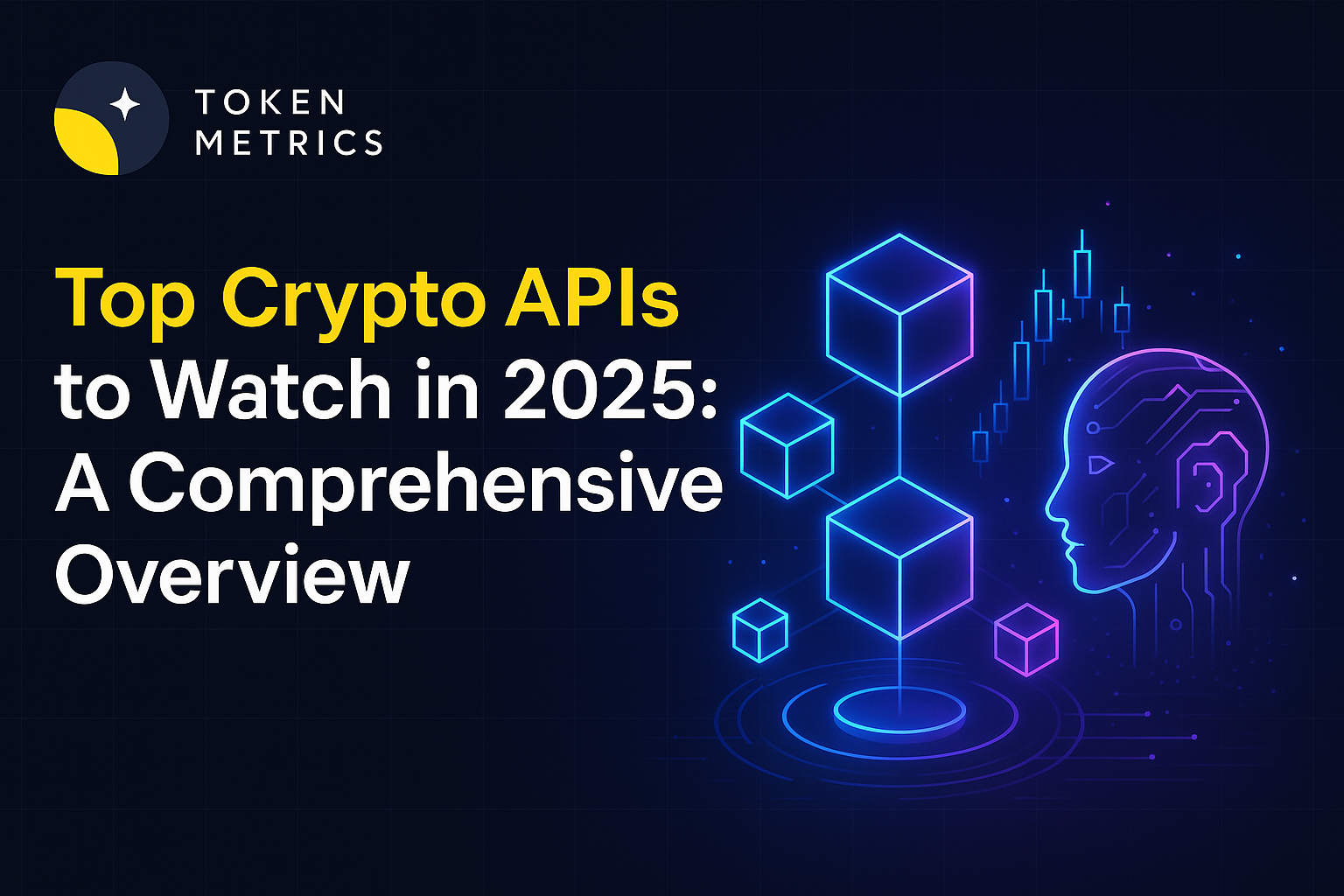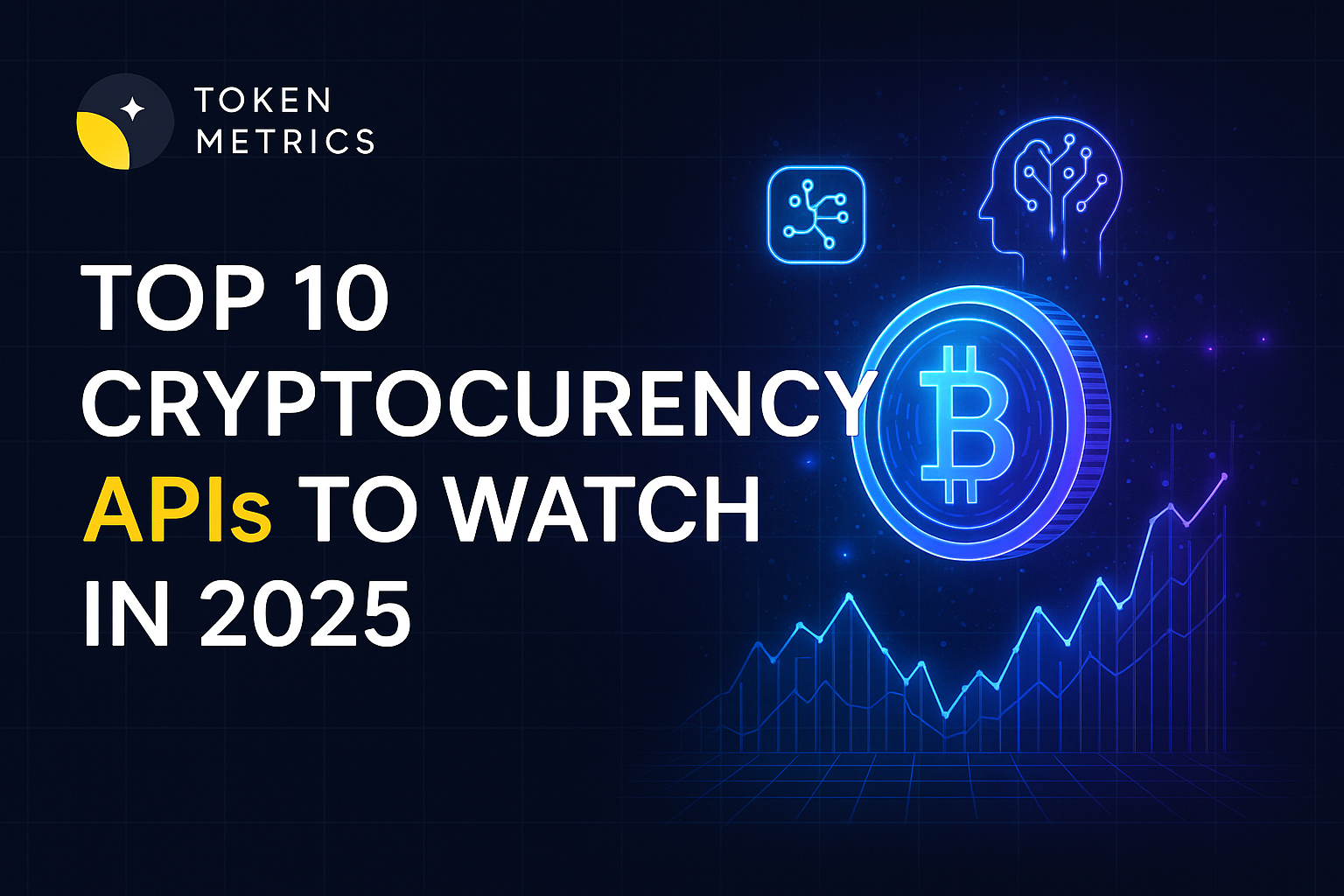
Token Metrics Revenue Sharing DAO: The Future of Crypto Investing

For years, Token Metrics has been the go-to platform for AI-powered crypto research, market insights, and advanced trading tools. These resources have helped thousands of investors navigate the complexities of the market.
But access to insights is just one piece of the puzzle. True wealth-building in crypto takes it beyond just data and predictions—it’s about having a direct stake in the platforms shaping the future.
That’s why Token Metrics DAO is now live. This for-profit, community-driven ecosystem is designed to reward long-term TMAI stakers, provide real governance power, and offer exclusive investment access—all while keeping our industry-leading analytics and tools at the core of the experience.
Token Metrics: From Intelligence to Ownership
The expansion from a data-driven research platform to an integrated staking and governance ecosystem isn't an accident. We believe investors need more than just information. They need opportunities to actively participate in the upside.
But let’s be clear: Token Metrics isn’t abandoning its core mission. The platform’s cutting-edge analytics, AI-driven token ratings, and market insights remain at the heart of everything we do.
What’s different is that now, the most committed members of our community can access even more benefits—without extra costs, and with a real financial stake in the platform’s success.
How the Token Metrics DAO Works
Token Metrics DAO takes the power of our research-driven investment tools and combines it with on-chain governance and rewards. This means that instead of just using Token Metrics insights, TMAI holders now can earn from and influence the platform itself.
By staking TMAI, users receive veTMAI, a token that unlocks:
- A share in platform-generated revenue (subject to governance approval)
- TMAI incentive rewards that increase based on lock-up duration
- Access to premium Token Metrics tools—no more subscription fees
- Governance rights to shape the platform’s future
- Early access to high-potential launchpad projects
This system ensures that long-term participants benefit the most, creating an incentive for sustained engagement while keeping Token Metrics’ research tools accessible and valuable to all users.
Governance That Impacts Your Portfolio
Decentralized governance isn’t new in crypto, but few projects give users real influence over revenue and strategy. Token Metrics DAO changes that.
The first governance proposal is a vote on how platform revenue from on-chain swaps is distributed to veTMAI holders. This means that staking TMAI is not about earning yield—it’s about generating a real, platform-backed return.
Beyond revenue sharing, veTMAI holders will have a say in:
- How to distribute or invest revenue earned by the DAO
- What early-stage private sales to invest in
- Upcoming projects for the public Launchpad
This is a long-term model that aligns platform growth with community incentives. The more successful Token Metrics becomes, the greater the potential benefits for TMAI holders.
Early Access to the Best Investment Opportunities
Access to high-quality research is valuable. But access to investments before the market catches on is game-changing.
Remember $LUCKY, the Token Metrics Launchpad project that soared 30x post-launch? A lot of investors only heard about it after it had mooned.
With Token Metrics DAO, veTMAI holders gain early access to high-potential crypto projects before they go public—giving them the same first-mover advantage that has historically been reserved for VCs and insiders.
A Sustainable, Rewarding Model
While many crypto projects introduce staking without considering long-term sustainability. Token Metrics has designed a system that balances rewards with platform growth.
Instead of simply inflating token supply, Token Metrics DAO builds its rewards model on real economic activity—including subscription-free analytics access, early-stage investments, and community-governed revenue-sharing models.
This isn’t about replacing tools or research—it’s about expanding how crypto investors engage with their portfolios, platforms, and communities.
The Future of Crypto Investing Starts Today
Token Metrics DAO is not a new product feature—it’s an expansion of what we’ve always done best: empowering crypto investors with intelligence, opportunity, and now, ownership.
By staking TMAI today, users secure:
- A long-term stake in the Token Metrics ecosystem
- The ability to influence platform decisions
- Early access to high-potential investments
- Subscription-free analytics and research tools
- A share of platform revenue (if governance approves it)
The tools remain. The insights remain. But for those who want to go beyond using Token Metrics—and start owning a piece of its future—the opportunity starts now.
Are you ready to take the next step?
Stake TMAI & Join Token Metrics DAO Today

.svg)

Create Your Free Token Metrics Account

.png)




%201.svg)
%201.svg)


%201.svg)









.svg)




.png)